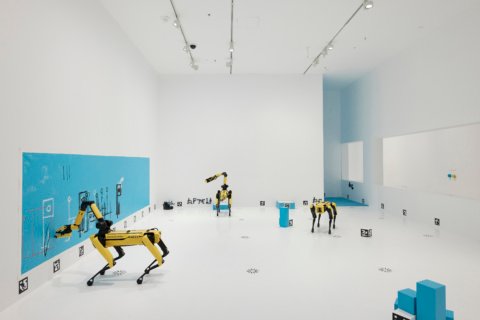THE paintings of Matthew Krishanu (Feature, 3 May) are works of attention. The content and viewpoint are that of children — Krishanu and his elder brother — with the works enabling us to see as they see.
Sister Corita Kent suggested that children could give adults lessons in looking. She described a child on a familiar journey noticing everything as “every piece of paper, every scrap, every object along the path will be a new discovery.” It wouldn’t matter that the child was in familiar territory, as, “To the child, the journey of this particular day, with its special light and sound, has never been made before,” and so the child would treat the journey “with the open curiosity and attention that it deserves”.
Similarly, Krishanu shows us the world from the perspective of a child and asks us to pay attention as the child does. Accordingly, we see the vastness of the world around us, whether its foreground expanses or the complex climbing frame of banyan trees or the immense depth of pools, rivers, and oceans. In the adult world of human beings, we are often at the back of crowds looking through beings like trees in a forest, or looking up because we cannot look through.
The adult world involves our adults — our parents — who, in this instance, are a priest and a theologian in Bangladesh. So, we see the strangeness of those with whom we are most intimate having public roles in which they dress up in strange clothes to act out rituals that are not fully understood. This strangeness extends to the interactions of people of different races and cultures, including the power dynamics between them.
Krishanu makes the known and familiar strange because we see it as a child, not an adult, does. Jesus said, “The greatest among you must become like the youngest,” and “Unless you change and become like children, you will never enter the kingdom of heaven.” Yet, as adults in church, we rarely try to see as children see. Krishanu takes us right there, however, and our adult world looks very different from that perspective; to look, genuinely, with the eyes of a child is a salutary and spiritual experience.
“The Bough Breaks” at Camden Art Centre presents us with new and existing works in Krishanu’s ongoing series of paintings, including Another Country, Other Places, Two Boys, Mission, and Holy Family. The images range from fleeting sketches to small works on paper and large works in oil and acrylic which combine impressionistic fluidity with clarity of mark-making and insight. The title of the exhibition alludes to images in which the artist and his brother are depicted perched on, and dwarfed by, the majestic branches of a banyan tree. Their smallness in relation to the tree and the sense that they might fall or a bough break highlights the way in which these images deliberately teeter on the cusp of both safety and insecurity.
Works from Another Country and Other Places explore aspects of the artist’s childhood spent in India and Bangladesh, as well as Yorkshire, where he was born. His Holy Family series is then presented alongside his Mission paintings. These include portraits of Bengali Christian bishops, nuns, and priests, which serve as a counterpoint or corrective to European depictions of White Christian figures perpetuated in Western art.
Two partner paintings that sit alongside each other in the show depict the artist’s mother (an Indian academic and teacher of liberation theology) and father (a British, White Christian priest who worked for the Church of Bangladesh). Krishanu’s images raise questions about religion, race, power, and the legacies of empire, but, most of all, about childhood and the perspective and attention of a child.
“The Bough Breaks” is at Camden Arts Centre, Arkwright Road, London NW3, until 23 June. Phone 020 7472 5500. camdenartscentre.org

